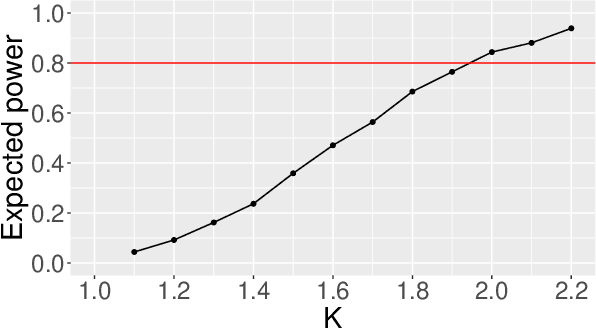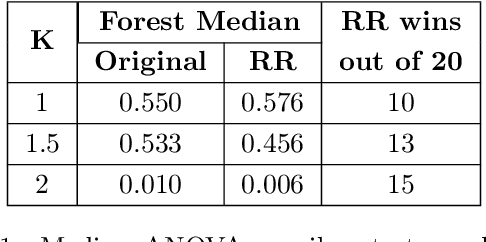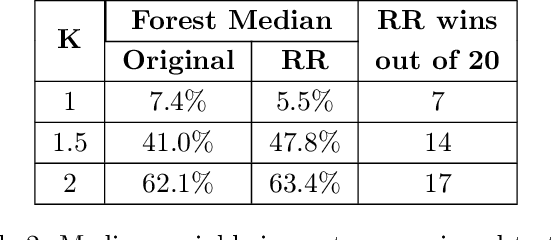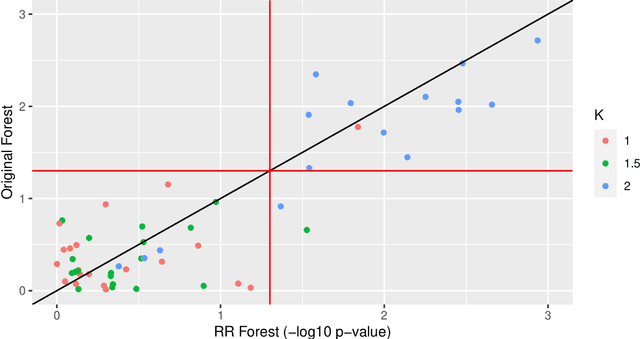Targeting Relative Risk Heterogeneity with Causal Forests
Paper and Code
Sep 26, 2023



Treatment effect heterogeneity (TEH), or variability in treatment effect for different subgroups within a population, is of significant interest in clinical trial analysis. Causal forests (Wager and Athey, 2018) is a highly popular method for this problem, but like many other methods for detecting TEH, its criterion for separating subgroups focuses on differences in absolute risk. This can dilute statistical power by masking nuance in the relative risk, which is often a more appropriate quantity of clinical interest. In this work, we propose and implement a methodology for modifying causal forests to target relative risk using a novel node-splitting procedure based on generalized linear model (GLM) comparison. We present results on simulated and real-world data that suggest relative risk causal forests can capture otherwise unobserved sources of heterogeneity.
 Add to Chrome
Add to Chrome Add to Firefox
Add to Firefox Add to Edge
Add to Edge